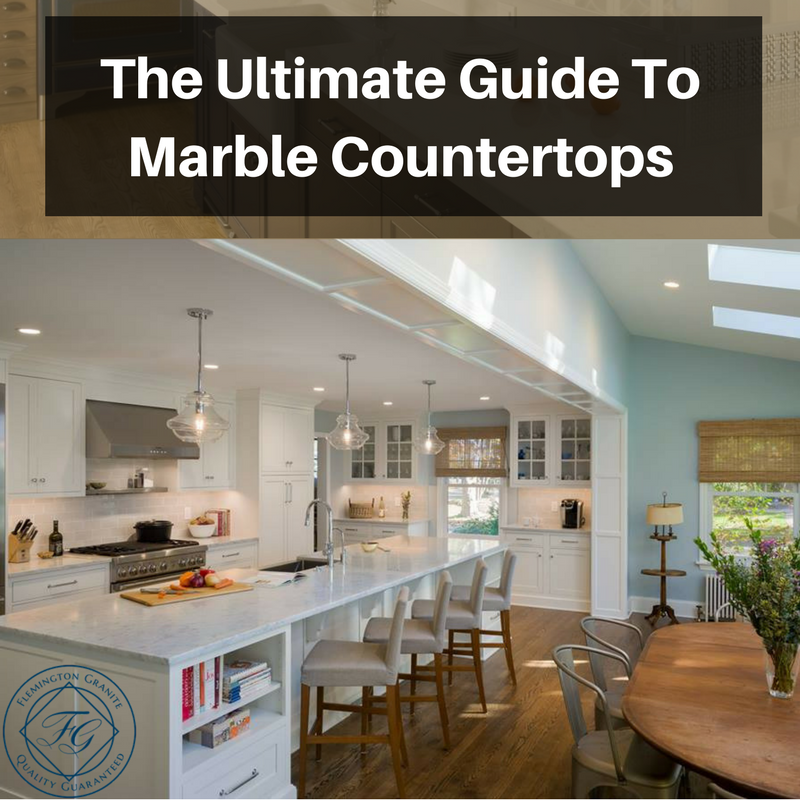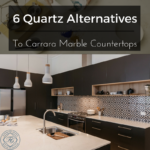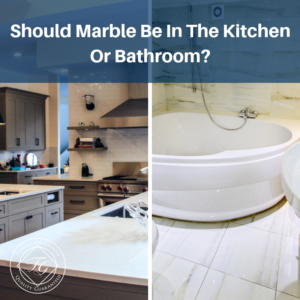
Marble has a classic look that is very familiar to anyone as it has been used for building materials for centuries. It is luxurious, stunning and brings a sense of sophistication to any room. However, marble does have disadvantages over other types of natural stone.
It is susceptible to staining as it is porous and, because marble is a soft stone, is prone to cracking, scratching or chipping. It also develops a natural patina over time. Many people like a counter that reflects that it was used, however, so if you are one of those types, these tips can guide you.
What is Marble?
Marble is a metamorphic stone found in many areas throughout the globe. The stone is created through heat and pressure that causes chemical alterations that create veins of mineral deposits. It also has a crystalline nature that allows it to take a polish.
Unlike granite, which develops deeper in the Earth so it is exposed to more heat, marble is porous, although not as porous as soapstone. It is prone to scratching as it has a low abrasion rating and is very sensitive to acidic materials like lemon juice or coffee.
Marble Colors
No two slabs of marble are alike and are available in shades of white, black, gray, yellow, green or pink, some with dark veins and some with subtle veining. Many designers recommend marble because the irregular veining can be a contrast to the stark lines that appear in most kitchens.
Most people choose white marble backgrounds because it is adaptable and blends well with other colors. It can be purchased in a honed finish, sometimes called matte, that is created when the marble is sanded. It can also be polished to give it a high-gloss. You can also find marble with a leather finish which is created when a leather-like texture is added to a honed surface which hides fingerprints and other imperfections well.
Maintenance of Marble
Marble requires sealing to protect it from staining, but even with protective sealants, marble will eventually develop a patina and can still absorb stains. There are two options for sealants. A topical sealant covers the stone and can slightly change the look of the stone, but protects it against etching.
Topical sealants wear off after time and can be scorched if a hot pan is placed directly on the surface. Penetrating sealant seeps into the stone so that there is less chance of staining, but they do not protect the stone from acidic materials. Penetrating sealants also must be reapplied, usually once each year. Some of the best maintenance tips for marble include:
- Wipe up spills immediately.
- Avoid abrasive or harsh chemicals when cleaning. Mild dishwashing liquid and warm water is enough to clean marble.
- Use cutting boards to protect the surface.
Buying Marble Countertops
The first step to buying marble countertops is to know your size needs. Most slabs are between 0.75 to 1.25-inches thick, although you can get thicker slabs if necessary. Marble is a natural product so what arrives after your order may not look exactly like what you saw in the showroom.
Marble slabs also are not priced by the slab as there are many variables that go into installation, cutting and more. Most dealers will have a price range that will help you narrow your search. In some cases, marble may be one of the lower priced options, but this is not true of all marble, so it is important to discuss price points with your dealer.
If you are considering marble countertops for your home, contact us today to learn more. You can speak to one of our knowledgeable sales staff by calling or completing the easy query form online. We can help you choose the perfect marble for your home.






